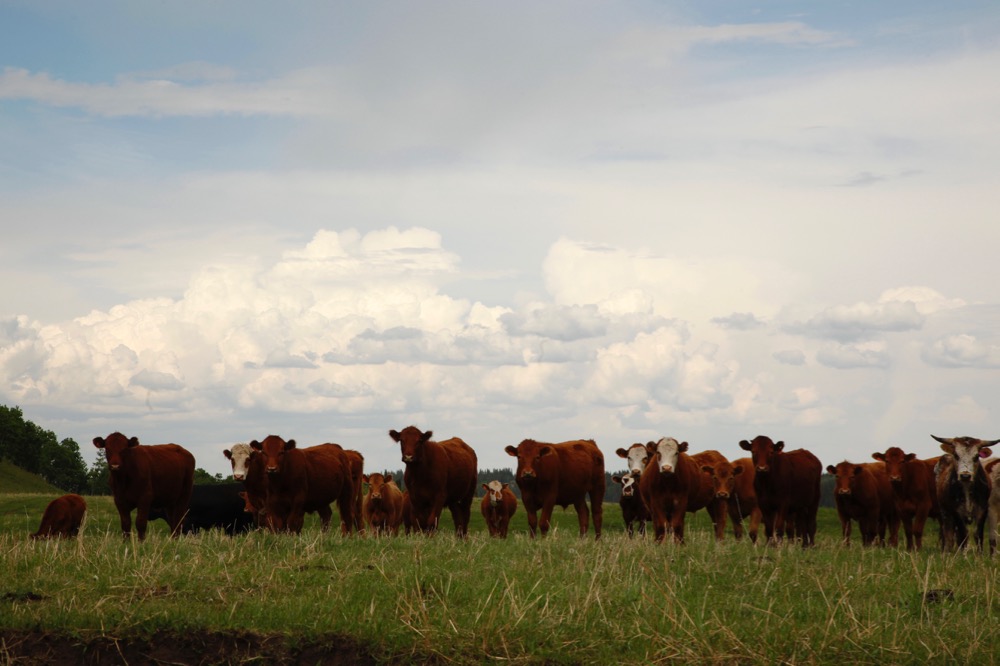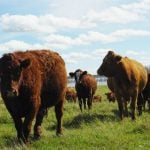Here are some facts about the Canadian beef industry, you probably didn’t know – and
these come via Neil French, a beef specialist and instructor at Olds College.
Largest cattle producers
Assuming on any given day there are a little over a billion head on cattle on the planet, India has the largest cattle herd in the world with about 279.7 million head or roughly 27 percent; Brazil is next with 166 million head, or 16 percent; China is third with 145 million head, or 14 percent; the U.S. is fourth with 98 million head or 10 percent; and the E.U. is fifth with 88 million head or 8.5 percent. Canada is 11th with about 14 million head, which is about 1.5 percent of the global herd. And we’re talking cattle here, not just beef animals.
Read Also
Some perspectives of what’s in store for 2022
By Lee Hart Between COVID-19, supply-chain disruptions and now the conflict in the Ukraine it seems like any calm or…
A comment from Neil “When the Canadian cattle inventory goes up five percent it seems like a big deal and if we have border issues it is. In the world scene, if Canada increases its beef output by five percent it changes world production by only .1 percent. If Canada increased its beef supply by 50 percent it would change world beef production by only one percent.”
Largest exporters
The largest beef exporting country in 2002 was Australia with about 21 percent of the world market, followed by the U.S. with 16.5 percent of the world market, and Canada in third with about 15 percent of world market. According to Canfax figures for 2007 that has shifted, with Brazil leading world exports with about 25 percent of the market. Australia is in second place with about 18 percent of the
market, and Canada is still in third place, but with about 10 percent of the world market.
Biggest importers
In 2002, the U.S. was the largest importer of beef in the world with about 25 percent of imports, followed by Japan with 12 percent of imports. In 2007 the U.S. was still the largest importer at 28 percent, however Russia was in second place with 12 percent. (While we often see TV images of a poor infrastructure and an outdated economy in Russia, the fact is that the booming Russian oil industry has created more millionaires and billionaires in Moscow than in Alberta.)
Canadian beef customers
In comparing figures for 2002 and 2007,the U.S. is still Canada’s largest customer for beef (who knows what 2009 will look like). The U.S. imported 266,000 metric tonnes of beef from Canada in 2002 and that increased to 298,000 metric tonnes in 2007. Mexico is No. 2 importing about 27,000 metric tonnes in 2002, with a big increase to 40,000 metric tonnes in 2007. Japan was the third largest importer in 2002 importing about 8,000 metric tonnes, but by 2007 Canada’s third largest beef customer was Hong Kong and Macau importing about 15,000 tonnes. Japan is gone.
Beef production in Canada
Western Canada dominates beef production in this country. In 2002, about 40 percent of the beef herd was in Alberta, 25 percent in Saskatchewan, 12 percent in Manitoba, nine percent in Ontario, and six percent in B.C. In 2007, Alberta still had about 40 percent, but Saskatchewan had increased to 30 percent. On the feeding side, 71 percent of Canadian cattle are fed in Alberta, with nine percent in B.C., Saskatchewan and Manitoba, and 18 percent in Ontario.
Did I happen to mention that Hereford and Hereford-cross cattle consistently (99.9 percent of the time) produce AAA and prime carcasses, with an 85 percent meat yield, are the most flavorful and most tender, are the most docile, have the highest feed efficiency, have 99 percent conception rates, do best on plain straw, and can be trained to close the gate behind them when they leave a field. I bet a lot of you didn’t know that. (Actually I made most of that up, but since the Canadian Hereford Association offered me a seat at a recent beef school I thought I owed them a really good plug).












